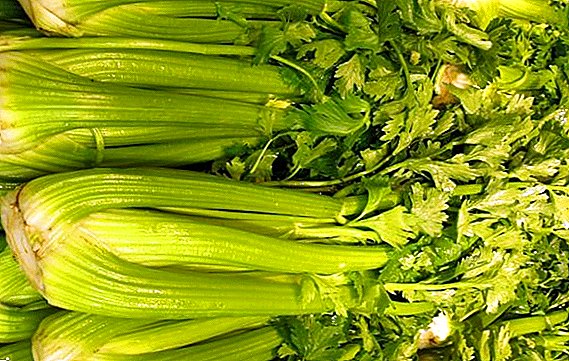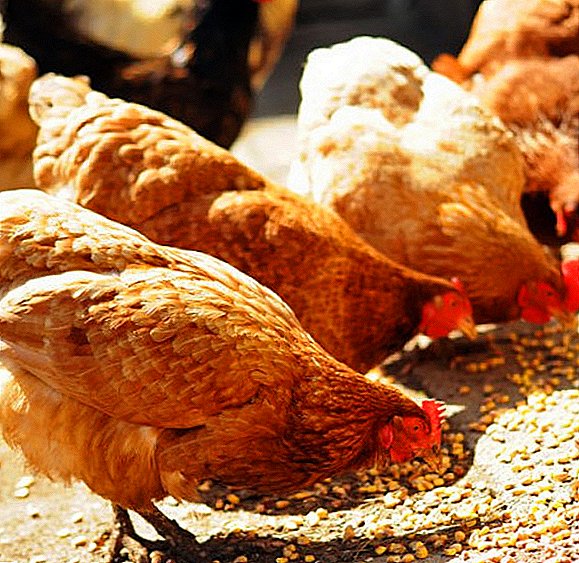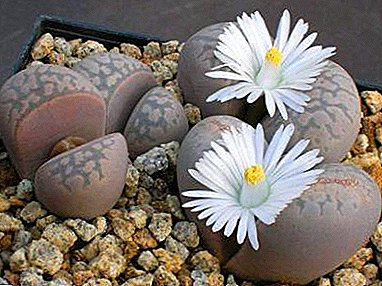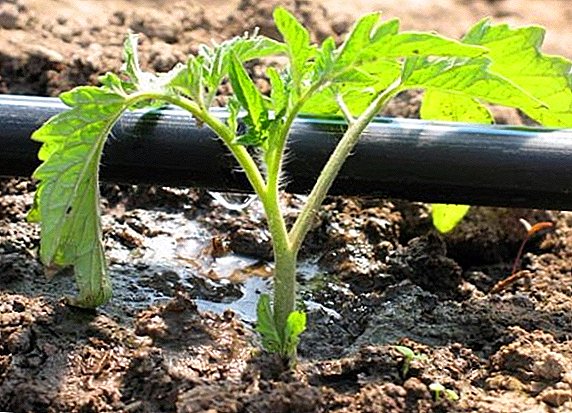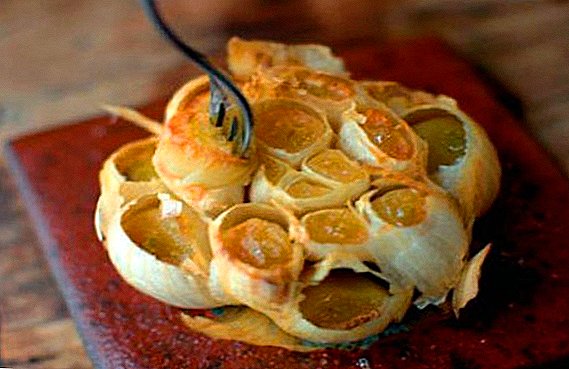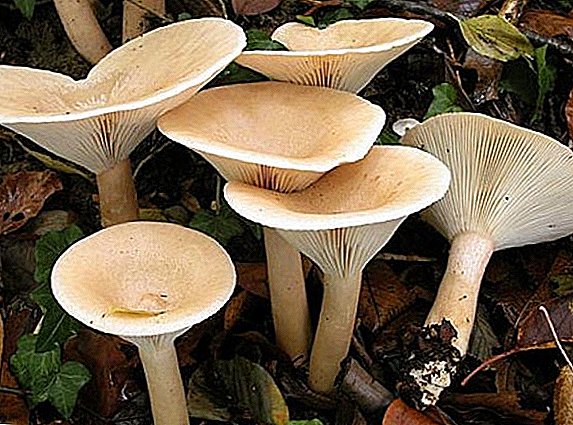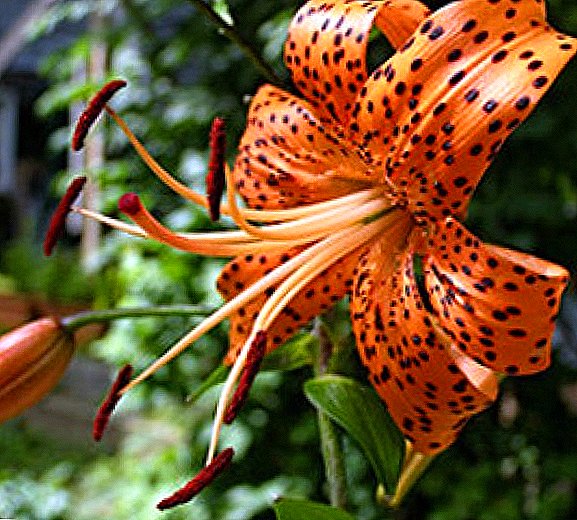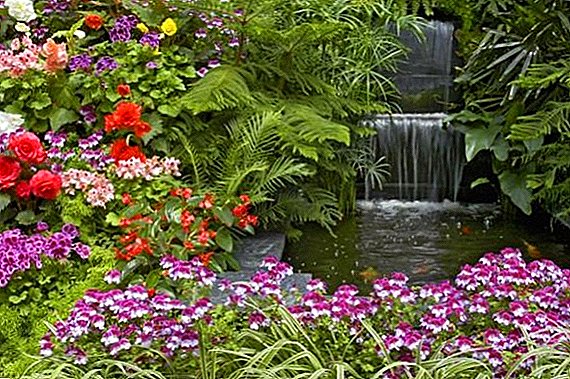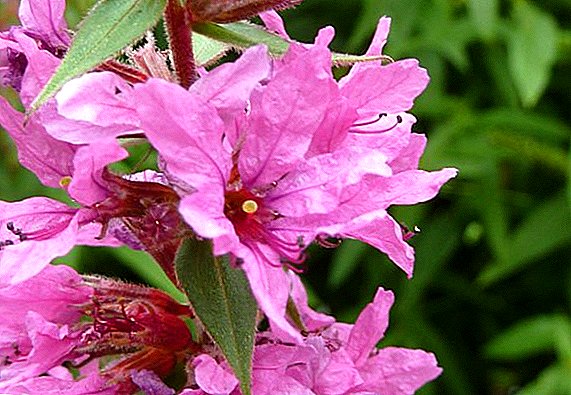 Ivolist Derbennik is a perennial ornamental plant of the genus Derbennikovye. Distributed throughout Eurasia, Australia, the Russian Federation and North Africa. The flower is usually located on the marshes, river banks and other damp areas.
Ivolist Derbennik is a perennial ornamental plant of the genus Derbennikovye. Distributed throughout Eurasia, Australia, the Russian Federation and North Africa. The flower is usually located on the marshes, river banks and other damp areas.
All features of planting and caring for a flower, we consider in this article.
Botanical description
Description of the junkie (with photo)
- Plant height from 80-140 cm. (Can reach 2 m).
- Stem tetrahedral and straight.
- Root system: strong, creeping, shallow.
- The root is woody and thick.
- Basal leaflets opposite (sometimes whorled), upper - oblong, alternate, up to 10 cm long.
- The flowers are star-shaped, numerous, up to 1 cm.
- Inflorescences have a spike shape, placed in the axils of the bracts.
- The corolla has a purple color; the length of the petals is up to 14 mm.
- Bud - oval oblong capsule, length - 3-4 mm; seeds are small.
- Flowering period: from July to August.

Did you know? The popular name of the plant is plakun-grass. According to legend, the flower sprouted from the tears of the Virgin Mary, shed for the sufferings of Christ on the cross.
There are the following varieties of idiot:
- Sticflamme - flowers have a pink-purple color, reach a height of 140 cm;
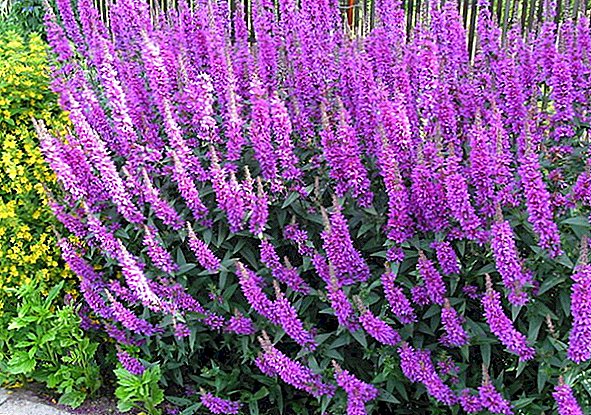
- Zigeunerblut - flowers have a red-dark color, reach a height of 120cm;

- Augenweide - flowers have a purple-red color;
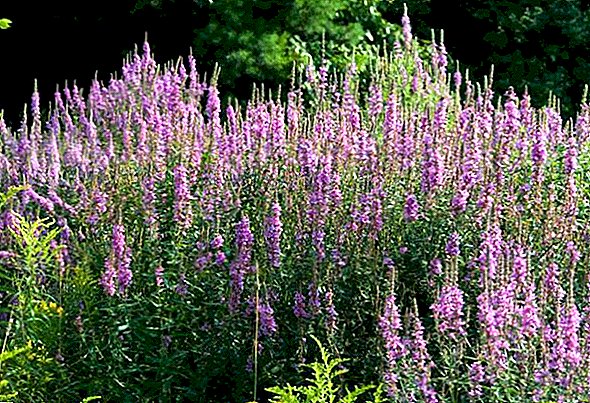
- Brilliant, Lady Sackville and Robert - come in all shades of pink;
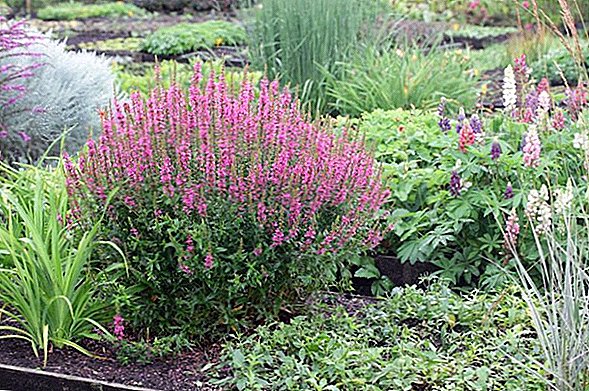
- Roseum - flowers dim pink hue, low.
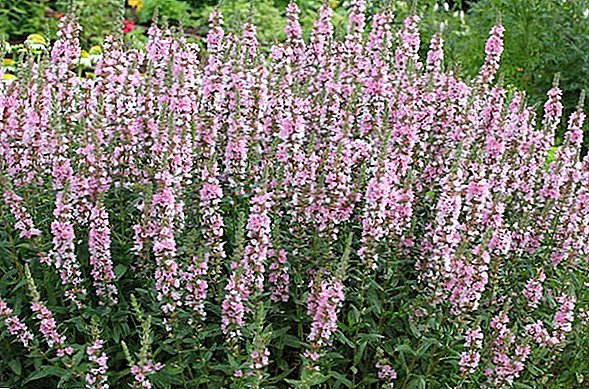
Your flower garden will be decorated with such useful plants as calendula, marigold, periwinkle, St. John's wort, lily of the valley, black cohosh, Rhodiola rosea, visible stonecrop, gravilat, skoumpia, Echinacea purpurea.
Where to plant junk
Ivolist greenstripe is not picky about different weather conditions, it has spread to all continents except Antarctica. The flower describes itself as a reliable and resistant plant, so it is often used in landscape design.
Lighting and location
Although, the plant is considered unpretentious, but it feels good only when there is enough sunlight. Only under these conditions, the crater gives generous flowering.
The plant loves moisture. Shady and damp gardens, sunny, wind-blown areas, areas near rivers, lakes and other wet places are perfect for landing.
Important! In the summer, plakun-grass is allowed to be transplanted into reservoirs (rivers and lakes coast) 30 cm deep, it tolerates active waterlogging.

Growing soil
The soil for the lozenge should be fertile, because it holds water, a lot of nutrients, and also contains the necessary air, which contributes to the rapid growth. In the first year, plant the plant in loose soil, this contributes to the proper formation of the root system.
Planting rules seedlings
Landing the idiot is made in open ground on a bright sunny site. Before planting, organic fertilizers are applied to the bottom of the fossa (or while digging the soil), and then the flower is watered abundantly. Constant watering and exposure to sunlight - the main rules for the care of the trash.
It is best to plant a lash in early spring in the still wet ground. Sown grains need to be sprayed with water and covered, thereby creating additional heat in this area, only then the seeds will sprout at the same time.
Important! Derbennik prefers organic fertilizers such as peat and compost (used to mulch the soil after planting).

Breeding methods
There are several ways to propagate plakun-grass: seeds, cuttings, dividing the bush.
Seeds
There are two ways of sowing seeds:
- rassadnym;
- into open ground.
In open soil, seeds are sown in the fall or after the snow melted. Seeds germinate in 20-30 days after sowing (bloom for 2-3 years).
Plakun grass is easy to propagate the collected seeds. When flowers bloom, they need to be cut, after which the seeds are collected. Purchased seeds are no less prolific than they were handpicked; planting is the same as planting home seeds.
Dividing bush
The easiest and most effective method is carried out in spring and autumn. Mature bushes need to dig and divide (with an ax or a shovel, because the root system is very strong) into 2-3 parts, then transplanted to a new place and water it abundantly.
Important! There is no need to divide the loot into many small bushes, they will take a long time to take root or even die at the new place.
Cuttings
In order to propagate the stalk of Ivolist cuttings (photo attached), in early summer or spring, they need to be broken at the base of the bush, at least 10 cm long, each of which must have 4-6 leaves. Then land the finished cuttings in the ground under the film or cap. At the beginning of autumn, when they take root, plant them in a permanent place (the description of the planting of the plant is given above). 
Rules for the care of plakun-grass
Mineral components are used for soil fertilization (which include nitrogen, as it contributes to the development of the aerial part of the plant).
These fertilizers include:
- sodium and calcium nitrate;
- ammonium sulfate;
- urea;
- ammonium nitrate.

Did you know? Willowbill is a good honey plant. Honey turns fragrant and tart.Benefits of mulching:
- retains soil moisture near the root system;
- promotes thermoregulation (saves the plant from freezing and overheating);
- enriches the soil with useful substances and keeps them in the ground, preventing them from leaching and weathering;
- interferes with growth of weeds;
- with proper use of mulch, a good level of acidity is achieved in the ground;
- mulching provokes the friability of the earth, earthworms appear in it, which promote the entry of air into the soil, crush its components, process organic residues, thereby improving plant growth.
 Mulching materials:
Mulching materials:- expanded clay - environmentally friendly building material, consists of clay and slate, holds water well in the ground, preventing it from evaporating;
- sawdust - over-ripe, is by no means fresh (they can burn the plant);
- agrofibre - lightweight, durable, non-woven material - reduces the risk of yield loss;
- grass or straw - easily accessible, economical material.
It is useful to know how to properly mulch tomatoes, strawberries, lawn, potatoes.Cut the garbage cloth in the spring or early fall under the spine. Excess branches are pruned in the summer (for a beautiful bush shape).
In winter, it does not need shelter.
Diseases, pests and other difficulties
Lycra is resistant to diseases and various pests. The plant can be attacked by aphids, which roams from other flowers. In order to avoid the attack of aphids on bushes of plakun-grass, periodically inspect the plant. 
Important! When a pest is detected, treat the seedlings with chemicals designed to kill insects. You can use a spray in which water is poured and laundry soap is added (this method does not harm bees, bumblebees and other pollinators).To national methods of getting rid of aphids include:
- tincture with dandelions - 500 g of leaves pour 10 liters of warm water and insist 2 hours;
- onion peel infusion - 200 g peel insist in 10 liters of water for 4 days, strain before use;
- tincture of potato or tomato tops - 1-2 kg of tops pour 10 liters of water and insist 3-4 hours;
- an infusion of celandine - we fall asleep a bucket of celandine, pour it with cold water and insist for 1 day. Before use, strain.

Little about the healing properties
The plant is used in folk medicine as a hemostatic and diuretic. Roots and grass contains:
- pectins - help the body fight aging and pollution. They reduce cholesterol and blood sugar levels, as well as reduce the risk of cancer.
- carotene - vitamin A, it cleanses the body, improves eyesight, strengthens the roots of hair and nails.
- glycoside seriesc - improve cardiac activity (frequent use of glycosides causes weakness, vomiting, dizziness, sweat, seizures, and many undesirable side effects).
- tannins - produces hemostatic, anti-inflammatory and cleansing actions.
Juniper, chervil, bay leaf, lovage, mordovnik, maple have diuretic properties.Derbennik is contraindicated for people with high blood clotting and high blood pressure.
Derbennik - a beautiful perennial plant that requires minimal maintenance. Unpretentious, growing everywhere - the best option for large gardens, as flowering lasts from mid-spring until the end of summer.







